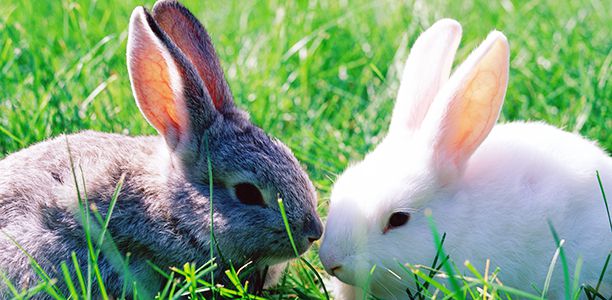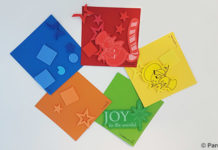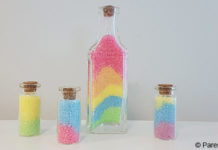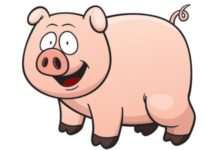Age
2-10 years
Duration of activity
Making a set of Easter Bunny ears will take approximately 30 minutes.
Materials/equipment
- Printable Easter Bunny ears template

- A4 cardboard sheets
- Scissors- for younger children use blunt nose safety scissors
- Colouring pencils
- Glue
- Cello tape
Cost
This activity is inexpensive- apart from the Easter Bunny ears template which you can print at home, everything you need for this activity you’ll probably already have amongst your craft supplies.
Preparation
- Print one or more copies of the Easter Bunny ears template, depending on how many sets of ears you want to make.
- Prepare an area for gluing the template to cardboard and ears to the headband where it won’t matter if your child makes a bit of a mess.
What to do
- Show your child the Easter Bunny ears template and explain to them that by colouring the ears, cutting them out and attaching them to the headband, they can make a set of Easter Bunny ears to wear.
- Give your child a pair of scissors and ask them to cut neatly around the bunny face and ears and the headband sections of thetemplate. Depending on your child’s age you might need to help them or do the cutting for them. Children younger than about six years will probably need a hand, although by four or five years children can generally cut straight but curved lines, so will probably be able to cut out the head band but not the bunny ears.
- Ask your child to glue the template to cardboard and leave to dry. This step is important so that the bunny ears don’t flop.
- Give your child colouring pencils or other art materials to colour or decorate the ears. You could also use paint or glue flower petals, glitter and sequins on the ears to decorate them.
- Your child may also want to colour or decorate the headband or write their name or the name of another child they would like to give the ears to on the headband.
- Cut the card around the template. Then it’s time to glue the pieces together. Turn the ears over so the printed side which your child has coloured is facing down. Apply glue to both edges of the headband at the bottom of the ears.
- Take two pieces of the headband and glue one to each side of the headband attached to the ears.
- Wait for the glue to dry then turn the ears and headband over. Place a piece of cello tape over the join- use a long piece of tape that can be wrapped around to the back. This will make the headband stronger. Alternatively, you could staple the joins.
- Check the ears to see if they fit your child’s head. For older children you may need to attach the third section of headband. Use glue and cello tape to attach one side of the third section to one side of the headband.
- Wait for the glue to dry and apply cello tape to hold the join firmly.
- Wrap the head band around your child head so that it fits comfortably but tightly. Mark where the headband needs to be joined with a pencil.
- Cut of any excess length so that the headband is the correct size.
- Turn over, apply glue to one side of the head band and wrap the other section around so that they join.
- When the glue had dried add cello tape to hold the joint firmly in place.

Tips
- Talk to your child about the process of making the bunny ears as you go. Ask them questions about what they are doing and how they feel, for example whether they like cutting or colouring.
Extension activities
- For older children use a tape measure to measure the circumference of your child’s head. Then use the tape measure to mark the headband so that it is the same length as your child’s head circumference.
- Glue cotton balls on the outside rim of the headband to make it extra fluffy!
Educational outcomes
Mathematical skills
Maths is everywhere and while doing this craft activity, your child will also be developing their understanding of mathematical concepts like counting, colour and pattern.
Two-three year olds will probably demonstrate their understanding of maths by:
- Recognising that the Easter Bunny has two ears and saying ‘two’ when they see them;
- Using mathematical words, for example saying that the Easter Bunny has ‘big ears” and by three years using more complex words like long/short to describe the relative size of objects.
- Pointing to two sections of the headband and telling you if they are the same.
Four-five year olds might show that they’re picking up mathematics by:
- Counting the pieces they’ve cut out of the bunny ears template and telling you there are four pieces.

- Discussing the colours and patterns they have used to colour in the ears and head band, as well as the shape of the pieces that make up the bunny ears.
- Using words to discuss locations, for example telling you that the headband needs to be stuck at the bottom of the ears.
Six-seven years olds are likely to demonstrate their understanding of:
- Patterns, for example by drawing a pattern on one of the bunny ears and replicating it on the other ear.
- Halves and wholes, for example by showing you how the bunny ears could be cut into two equal halves.
- Measurement, for example by lining up the different parts of the bunny ears, comparing their size and telling you whether they are the same length, longer or shorter than each other.
Eight-ten year olds will be developing a more advanced understanding of mathematics. You may notice their ability to:
- Perform mathematical equations, for example by adding up the number of pieces in several templates or performing multiplication to work out how many ears in a number of headbands (e.g. there are six bunny ears headbands and each headband has two ears. How many ears are there altogether?).
- Watch the clock while completing the activity and at the end tell you how many minutes it took.
- Measure the length of the rabbit ears using a ruler and compare the surface area of the ears with that of the headband sections.
- Compare and describe the size of various angles in the rabbit ears, for example compare the right angles at the corners of the headband sections with the acute angles at the tips of the rabbit ears (and tell you it is a sharp or small angle) and the obtuse angle between the rabbit ears (and tell you it is a wide or large angle). Ten years olds will probably be able to measure the angles to the nearest degree using a protractor.
- Identify the two symmetrical sides of the bunny ears.
Fine motor skills
Fine motor skills are the skills which allow kids to use their fingers to perform fiddly tasks. These include writing, turning pages, touching screens and picking up small objects. Learning to hold a pencil and use it purposefully to make marks, write or draw is an important skill for young children to develop. Doing it also helps them to develop the small muscles in their fingers which provide their fine motor ability. Cutting and pasting are also great ways for children to use and further develop their fine motor skills.
Two year olds probably won’t be able to write or colour in very well yet, but they should already be able to pick up and hold writing implements like crayons and pencils steadily. They’ll also be able to use them to scribble, draw circles (but the ends are unlikely to connect) and make other marks on the paper. Over the next couple of years their abilities to control their writing will improve immensely. By about four years most children can control a pencil fairly well. For example they’ll probably be able to colour-in reasonably well (but will probably still go outside the lines sometimes, until they’re about six years old) and write letters some of the letters in their name. By about six years of age most kids can write their name, although it might squiggle over the page rather than going in a straight line and many still write some of the letters upside down or back the front. Handwriting skills improve rapidly over the next few years. Most kids can write neatly using unjoined letters by about eight years of age and will begin to use and master running writing from about nine years of age.
When it comes to cutting and pasting, young children will probably want to have a go, but expect them to need quite a bit of help until at least six years. Two-three years olds won’t be able to hold the scissors or the paper correctly for cutting yet, but they’ll probably enjoy having a go and snipping away at the edges of the paper. By about four years they’ll probably be able to cut out rough shapes but still won’t have perfected the proper grip they need to use scissors effectively. For example they may try to use the scissors with two hands or stick their fingers too far into the holes. They’re are unlikely to develop the ability to cut straight lines and corners until about five years of age, which is also when most kids develop their ability to hold a pair of scissors correctly. From about six years of age most kids are good at cutting and can neatly cut straight and curved lines, acute and obtuse angles.
Pasting will also present a challenge for younger children but they’ll undoubtedly enjoy dolloping lots of glue on their page and trying to spread it out anyway they can- two year olds are likely to try spreading glue using their entire hand and three year olds will most likely use a finger to spread it. By four or five years of age children will probably have developed a better sense of how much glue they need to use and be able to apply roughly the right amount to the paper. They’ll develop increasing control of their fingers and the ability to keep glue within a desired area of the paper by about six years of age. From about five years most children can handle a glue stick.
Communication and social skills

Listening and talking in everyday conversation are amongst the best things young children can do to develop their social and communication skills. By having conversations with your children and consciously asking questions, listening and answering you’ll be modelling communication skills which your child will learn by copying what you do. Two years olds still have a lot to learn about conversation, and at this age talking to you will help them understand key concepts and rules, for example that they are expected to respond when someone asks them a question and that people take turns when speaking to each other. Three years olds will have the opportunity to practice forming sentences from the words they know and using these sentences to communicate effectively, for example instead of pointing a saying ‘bunny ears’ they may use these words in a proper sentence such as, ‘I can see the bunny ears.’. Four year olds have a tendency to ask lots of questions, so expect them to ask you questions like, ‘Why are the bunny ears long?’ and, ‘How do Easter Bunnies carry eggs?’
Written and oral communication skills improve as children move through primary school. For example children begin to understand more complex grammar. They will start using compound (two phrases joined by a word like ‘and’) as well as simple sentences, and more complex combinations of nouns and verbs. They’ll also become increasingly good at expressing their thoughts and ideas using words. For example by about eight years of age a child might be able to create and tell a story about the Easter Bunny, describing not only what it looks like but also its actions. They’ll also explore new ways to express feelings and thoughts using body language and use these communication strategies increasingly effectively in the early primary years.
Easter has different meanings for different people. Making the bunny ears and other Easter crafts is an opportunity to talk about Easter and what it means to you and your family, as well as what it means to other people in your community and the rest of the world. You may want to talk about how the Easter Bunny fits into different people’s Easter beliefs and what different groups do to celebrate at this time of year. This will help pre-schoolers and older children understand what culture is and how people from different cultures have different beliefs and different ways of celebrating important dates like Easter. It’s also a great way to help children understand that communities include many different types of people but despite the differences these people have lots in common (e.g. they live in the same street or go to the same suburb).
Children in primary school will begin to describe the differences and similarities in their own and other people’s beliefs and later begin discussing the ways in which similarities and differences in beliefs and practices might help (or hinder) people from different cultures understanding each other.
Persistence and problem solving
Kids, especially young kids will need to persist to finish making the bunny ears. They undoubtedly stumble on a problem or two that they’ll need to work out along the way, for example how to spread out the glue, or how to make sure the headband is the correct size. Younger children might lose concentration if you don’t sit with them and provide encouragement and a helping hand along the way. If they can’t sit still for long enough to make the ears don’t worry- let them do a bit and put them aside to work on later. But encourage them to complete a section (e.g. the ear that they’re colouring or the section that they’re cutting), to help them develop persistence. As your child solves the small problems presented on the worksheets (e.g. which way to stick the headband, how to manipulate the scissors to cut that small angle) they’ll be developing problem solving skills they’ll need when they face more complex problems the future.
References
- Virginia Early Childhood Development Alignment Program. Milestones of child development- A guide to young children’s learning and development from birth to kindergarten. 2009. (cited 17 April 2014). Available from: (URL Link)
- Australian Curriculum and Reporting Authority. Australian Curriculum- Mathematics. Undated. (cited 24 March 2014) Available from: (URL Link)
- Australian Curriculum and Reporting Authority. Australian Curriculum- English. Undated. (cited 24 March 2014) Available from: (URL Link)
- Andrews M. General Categories of Fine Motor Development. Michigan State University Extension. UNDATED. (cited 17 April 2014). Available from: (URL Link)



 (5 votes, average: 4.20 out of 5)
(5 votes, average: 4.20 out of 5) 






